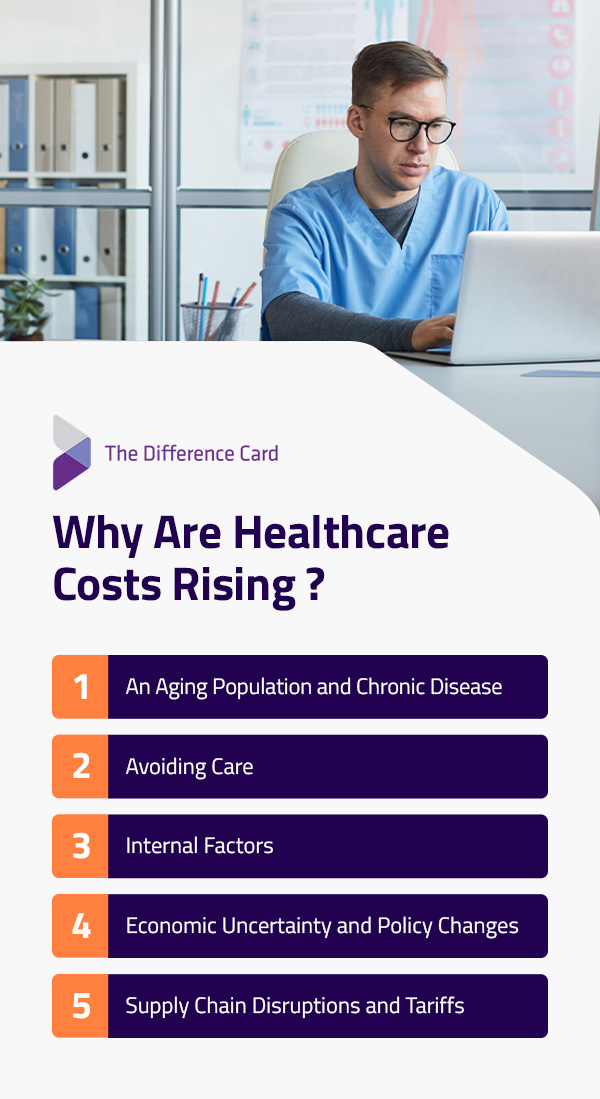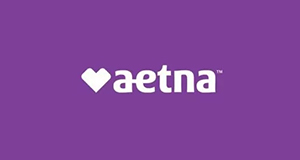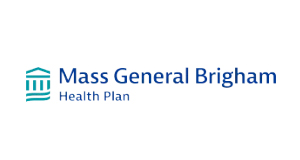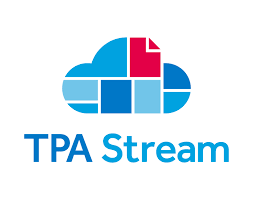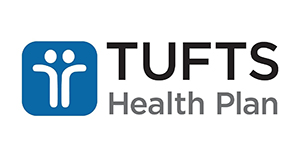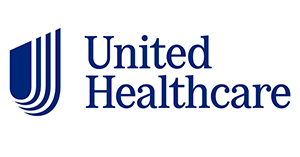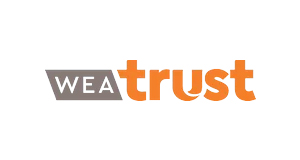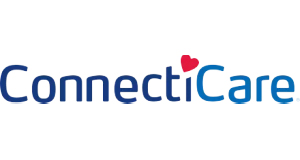
Why Are Healthcare Costs Rising?
Table of Contents
The rising cost of healthcare in the U.S. creates challenges for employers and the producers who guide them. Higher premiums, increased prescription prices, and shifting plan designs leave many business leaders asking the same question — why is this happening?
The reasons for rising costs of healthcare vary. Medical advancements, an aging population, and shifts in the pharmaceutical market are all influential. Plan design choices and regulatory factors add more layers of complexity. Managing these price increases requires crafting strategies to control spending without cutting benefits.
The Cost of Healthcare in the U.S.
Healthcare spending outpaces inflation and wage growth, making it a top concern for employers. The Centers for Medicare and Medicaid Services project national health spending will reach almost $7.2 trillion by 2031. This increase means higher premiums, increased claims costs, and growing pressure to balance affordability with comprehensive benefits. Major healthcare service spending broke down as follows in 2024.
- Hospital care: $1.5 trillion, about 31% of total health spending.
- Physician and clinical services: A 20% share at $978 billion.
- Retail prescription drugs: $449.7 billion, which is a 9% share.
- Other services: Mental health or home-based care took 6% of the spend, at $270 billion.
- Nursing care facilities: Services for freestanding nursing care cost $211 billion, taking a 4% share.
- Dental services: Spending came to $174 billion, claiming a 4% share.
- Home health care: Services for freestanding home healthcare cost $148 billion, at another 3%.
- Other professional services: Services like optometry and physical therapy came in at 3%, costing $160 billion.
- Other non-durable medical products: Over-the-counter medicines and medical instruments cost $124, claiming a 3% share.
- Durable medical equipment: At a 1% share, costing $73 billion, spending included contact lenses, hearing aids, and eyeglasses.
Interestingly, a small group of people accounts for a large share of spending. Those who must manage chronic illnesses or complex medical needs drive a disproportionate number of the total costs. High-cost specialty medications are also becoming an influential factor, adding to the increasing portion of pharmacy spending. Even a single claim for a specialty drug can nudge your healthcare budget the wrong way.
Total U.S. spending reached $4.9 trillion in 2024, and hospital care saw the steepest jump in 30 years. Employers shoulder rising plan costs alongside employees, especially for family coverage. The cost of employer-sponsored family coverage reached $25,572 in 2024. Small firms often pass a larger share to workers, and even with risk-sharing, expenses keep adding up. These pressures reflect broader forces in the healthcare system that steadily drive costs higher. Insight into why healthcare cost is rising helps you identify options to keep employee benefits balanced and your overheads manageable.
Navigating the Healthcare Affordability Crisis for 2026
Why is the Cost of Healthcare Rising?
Hospital care, physician services, and prescription drugs account for the most significant percentage of rising healthcare costs. Though advanced medical technology improves outcomes, it can be expensive. Additionally, consolidation among hospitals and providers reduces competition and adds administrative complexity, which also pushes costs up.
The U.S. system has multiple insurers, providers, and billing procedures, which adds overhead costs not typically seen in other countries. These inefficiencies ultimately result in higher premiums and out-of-pocket expenses.
Several other factors also contribute to higher health costs nationwide.
An Aging Population and Chronic Disease
Adults aged 65 and older now number about 61 million, and this population segment is prone to chronic conditions such as heart disease and hypertension. Several states already have more older adults than children. Chronic conditions are widespread among this demographic, with six in 10 adults having at least one chronic disease. About 38.4 million people have diabetes, and over 40% of adults struggle with obesity. These conditions drive steady, high-cost use — think cardiometabolic, renal, and oncology, across medical and pharmacy benefits.
Older employees are also more likely to need complex care or hospitalization, adding to the cost burden. For employers, this means higher claim volumes and increased health service use. Addressing chronic conditions through preventive programs and disease management strategies is essential to balancing costs while supporting employees' health.
Avoiding Care
In mid-2025, 36% of adults postponed care due to cost concerns. The consequences include late diagnosis, more inpatient admits, and higher per-episode spend, especially for cancer, cardiovascular disease, and behavioral health comorbidities. For example, delaying diabetes management can lead to costly complications such as kidney disease or cardiovascular events. Meanwhile, skipping routine cancer screenings can result in later-stage diagnoses that are harder and more expensive to treat.
Avoiding care also has indirect costs. Employees who delay treatment may experience more sick days, lower productivity, and increased stress, all of which affects workforce performance. Over time, these patterns increase medical claims and the hidden costs of absenteeism and presenteeism.
Internal Factors
Administrative inefficiencies, fragmented care coordination, and inconsistent billing practices also add to the rising cost of healthcare. For example, duplicate testing or communication gaps between providers can increase claims without improving outcomes. Aside from these, other dynamics also drive costs internally.
- Market power and prices: Consolidation raises negotiated rates, and research ties hospital and physician concentration to higher commercial prices. In 2022, employers paid an average of 254% of Medicare rates for hospital services, highlighting the unit-price pressure in many markets.
- High-cost therapies: Specialty trends keep outpacing the industry. The demand for medications like semaglutide and new gene and cell therapies push U.S. medicine spending without slowing down. Plan sponsors face high list prices and use expansion.
- Site-of-service differentials: Paying more for the same service in a hospital outpatient department than in a physician's office is still the norm. Federal advisers keep pushing for site-neutral payment policies to cut this spending.
Economic Uncertainty and Policy Changes
Bureau of Labor Statistics indexes show increases for hospital and other medical services. Policy shifts also affect costs. The Inflation Reduction Act's $2,000 Medicare Part D out-of-pocket cap starting in 2025 changes liability across payers. Enhanced Affordable Care Act subsidies are still in place, which affects the risk mix and coverage stability in individual markets.
Uncertainty around government programs and mandates creates additional volatility, making it harder for employers to forecast the rising costs of healthcare spending each year. Staying informed on policy development and building flexibility into plan designs helps you manage these uncertainties effectively.
Supply Chain Disruptions and Tariffs
Drug and device supply is fragile. The U.S. hit a record 323 active drug shortages in early 2024, with the total decreasing to 253 in 2025. As a result, critical fluids and sterile injectables are scarce.
Weather events like Hurricane Helene and quality disruptions have worsened shortages. Logistics volatility, such as Red Sea rerouting, periodically raises freight costs. News of higher U.S. tariffs on select medical products, like 50% duties on syringes and needles, adds more cost pressure to commodity supplies. These factors lead to spot price spikes, back-ordering, and costly substitutions at the point of care.
For employers, this causes higher costs and the potential for less access to necessary treatments. Proactively monitoring supply chain pressures and diversifying sourcing strategies avoids this risk.
Impact of the Patent Cliff on Medication Costs
The pharmaceutical patent cliff is another significant force shaping the future of healthcare costs. As drug patents expire, brand-name medications lose exclusivity, opening the door for lower-cost generic and biosimilar alternatives. This transition can create savings opportunities and short-term challenges for employers.
When a patent ends, generic manufacturers can legally make similar versions of the medication. Over time, generics often reduce prices by 70% to 80%, which creates meaningful long-term savings. Biosimilars, the generic versions of biologic drugs, carry a similar promise for high-cost treatments in diabetes, oncology, and rheumatology. Despite these benefits, there are complexities.
- Next-generation therapies: To offset revenue losses from expiring patents, pharmaceutical companies raise prices or introduce next-generation therapies at a premium.
- Strategic delays: In some cases, brand-name manufacturers use legal or regulatory strategies to delay generic or biosimilar market entries. These tactics can blunt the immediate cost relief employers might otherwise expect.
Employer groups must monitor pharmacy benefits. Without a strategy, drug costs can significantly boost healthcare spending, even when other cost-containment measures are in place. Next, look beyond market forces like the patent cliff. Innovative plan designs offer more tools to manage costs effectively while delivering comprehensive benefits.
The Effects of Rising Healthcare Costs
The cost of providing health coverage remains a significant budget item for employers. Premiums for employer-sponsored insurance keep increasing, and higher deductibles with copays are becoming more common. This shift puts more responsibility on employees, who may struggle to afford routine or preventive care.
The causes of rising healthcare costs lead to higher premiums and claim expenses, putting pressure on budgets and limiting resources that could otherwise go toward organizational growth and innovation. At the system level, the price of health insurance creates inefficiencies and puts stress on insurers, providers, and policymakers. The cycle of higher spending without better outcomes underscores the need for more intelligent, sustainable plan designs.
Savings Through Innovative Plan Designs
The rising cost of healthcare in America is inevitable, but as an employer, you can control costs without cutting back on employee benefits. A benefits partner can save you up to 18% on annual healthcare costs, proving that smarter plan design can deliver tangible results.
Cost-Containment Solutions
Through cost-containment solutions, you can reshape plan designs to reduce fixed premium costs without changing coverage. For example, you could pair a high-deductible plan with an employer-funded account that offsets employees' out-of-pocket expenses. This strategy would ensure employees get the same or better services while your business saves money, which minimizes claims volatility and improves spending efficiency.
Smarter Benefit Administration
Streamlining benefit administration makes it easier to manage costs while improving the employee experience and providing more transparency.
You get access to a single card that integrates multiple benefits, which reduces administrative complexity and employee confusion. Services like real-time claims resolution and automated reimbursement give your employees seamless coverage, and you keep tighter control over healthcare dollars.
Enhanced Employee Benefits at Lower Costs
The most effective plan designs provide more for less. Employees see lower copays, broader coverage options, or more predictable out-of-pocket spending while you benefit from reduced premiums. At the same time, your company spends less, creating a win-win scenario that strengthens employee satisfaction and retention — critical advantages in a competitive labor market.
Innovative health plan strategies bring cost relief. Options like level-funded plans, reference-based pricing, and direct primary care arrangements can lower expenses while maintaining employee satisfaction. Pharmacy benefit carve-outs and targeted wellness initiatives are also gaining traction. Producers are responsible for guiding employers toward these solutions. By tailoring plans to their workforce's unique needs, employers can get sustainable savings while still offering competitive benefits.
See the Savings With The Difference Card
Rising costs in healthcare pressure employers and producers alike, but they also open the door for smarter strategies. Understanding the drivers of spending and where these costs originate lets you make informed decisions about benefit design. Innovative plan options, paired with proactive pharmacy management, create valuable savings opportunities.
The Difference Card will analyze your workforce's claims data and create a tailored plan to optimize their coverage. These plans leverage high-deductible structures paired with employer-funded solutions to ensure your employees have no benefit reduction. With over 20 years of experience, we understand the importance of providing client success teams with support. Our service and accountability efforts have market-leading retention rates, giving us a top-tier Net Promoter Score of 65.
Request a proposal today and start saving on employee healthcare overheads.


